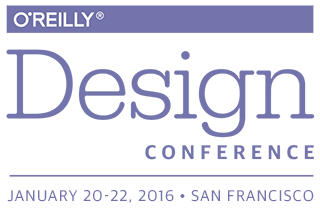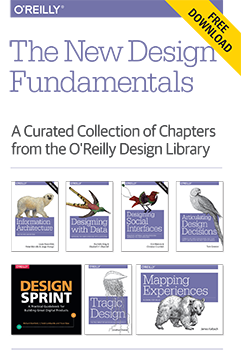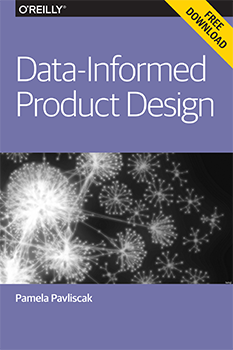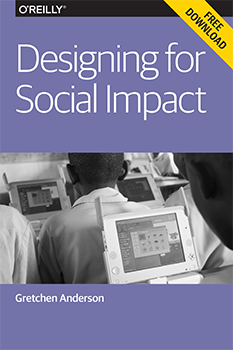"experience design" entries

Knowing when not to design
Don’t waste time on features that users don’t want.
Attend “UX Design for Growth,” a training session by Laura Klein that will give you the skills you need to design products that convert and retain users.
After many years as a designer, I’ve realized that some of the most important design decisions have nothing to do with what any of us consider design. Instead of designing the perfect version of a feature, sometimes the best thing we can do is learn that we shouldn’t build the feature in the first place.
In my all-day, online workshop on September 15, 2015, I’ll be talking about another aspect of building products: how to make them grow. Potentially fabulous products fail every day because product managers and UX designers don’t spend enough time thinking about how their product is going to be discovered by new users.
The following is an excerpt from my book, UX for Lean Startups, where I give one practical tip for learning whether or not you should build a specific feature for your product. If you’d like some practical tips on getting people to start using all those features you decide to build, please join me on September 15th for my UX Design for Growth training session. Read more…

Our world is full of bad UX, and it’s costing us dearly
We need to provide people with proper access, interaction, and use of technology so that it serves their needs.
Download a free copy of “The New Design Fundamentals,” a curated collection of chapters from the O’Reilly Design library. Editor’s note: this post is an excerpt from “Tragic Design,” by Jonathan Shariat, which is included in the collection.
I love people.I love technology and I love design, and I love the power they have to help people.
That is why when I learned they had cost a young girl her life, it hurt me deeply and I couldn’t stop thinking about it for weeks.
My wife, a nursing student, was sharing with her teacher how passionate I am about technology in health care. Her teacher rebutted, saying she thought we needed less technology in health care and shared a story that caused her to feel so strongly that way.
This is the story that inspired me to write this book and I would like to share it with you.
Jenny, as we will call her to protect the patient’s identity, was a young girl who was diagnosed with cancer. She was in and out of the hospital for a number of years and was finally discharged. A while later she relapsed and returned to be given a very strong chemo treating medicine. This medicine is so strong and so toxic that it requires pre-hydration and post-hydration for three days with I.V. fluid.
However, after the medicine was administered, the nurses who were attending to the charting software, entering in everything required of them and making the appropriate orders, missed a very critical piece of information: Jenny was supposed to be given three days of I.V. hydration post treatment. The experienced nurses made this critical error because they were too distracted trying to figure out the software they were using.
When the morning nurse came in the next day, they saw that Jenny had died of toxicity and dehydration. All because these very seasoned nurses were preoccupied trying to figure out this interface (figure 1-1). Read more…

Designing with all of the data
More than just filling in where big data leaves off, thick data can provide a new perspective on how people experience designs.
Download a free copy of our new report “Data-Informed Product Design,“ by Pamela Pavliscak. Editor’s note: this post is an excerpt from the report.
There is a lot of hype about “data-driven” or “data-informed” design, but there is very little agreement about what it really means. Even deciding how to define data is difficult for teams with spotty access to data in the organization, uneven understanding, and little shared language. For some interactive products, it’s possible to have analytics, A/B tests, surveys, intercepts, benchmarks, scores of usability tests, ethnographic studies, and interviews. But what counts as data? And more important, what will inform design in a meaningful way?When it comes to data, we tend to think in dichotomies: quantitative and qualitative, objective and subjective, abstract and sensory, messy and curated, business and user experience, science and story. Thinking about the key differences can help us to sort out how it fits together, but it can also set up unproductive oppositions. Using data for design does not have to be an either/or; instead, it should be yes, and…
Big data and the user experience
At its simplest, big data is data generated by machines recording what people do and say. Some of this data is simply counts — counts of who has come to your website, how they got there, how long they stayed, and what they clicked or tapped. They also could be counts of how many clicked A and how many clicked B, or perhaps counts of purchases or transactions.
For a site such as Amazon, there are a million different articles for sale, several million customers, a hundred million sales transactions, and billions of clicks. The big challenge is how to cluster only the 250,000 best customers or how to reduce 1,000 data dimensions to only two or three relevant ones. Big data has to be cleaned, segmented, and visualized to start getting a sense of what it might mean. Read more…

Designing with best practices, principles, and interaction patterns
It's important for designers to see emerging standards and understand how one experience affects expectations for the next.
Download a free copy of “The New Design Fundamentals” ebook, a curated collection of chapters from our Design library. Note: this post is an excerpt from “Designing Social Interfaces,” by Christian Crumlish and Erin Malone, which is included in the curated collection.
With the growing expectation of seamless experiences, it is important for designers to see the emerging standards and to understand how one experience of a site and its interactions affects expectations for the next site. By working with standard and emerging best practices, principles, and interaction patterns, the designer takes some of the burden of understanding how the application works off the user, who then can focus on the unique properties of the social experience she is building.To start, we do define these three things differently. They live along a continuum, from prescriptive (rules you should follow) to assumptions (a basic generalization that is accepted as true) to process (ways to approach thinking about these concepts).
Principle: A basic truth, law, or assumption
Principles are basic assumptions that have been accepted as true. In interaction design, they can lend guidance for how to approach a design problem, and have been shown to be generally true with respect to a known user experience problem or a set of accepted truths.
For example: be learnable — create systems that are easily learned and provide cues for users to predict how things work from one area to another.
Principles don’t prescribe the solution, though, like an interaction pattern does; instead, they support the rationale behind an interaction design pattern or set of best practices. Read more…

Golden opportunities for design lie in social-impact projects
Designers can find fertile ground in governmental, philanthropic, and health care domains.
Download the free report “Designing for Social Impact,” by Gretchen Anderson. Editor’s note: this is an excerpt from the report.
During the 2000 United States presidential election, product designers and developers discovered an uncomfortable truth about our nation. American democracy, long held up as a beacon for others to follow, was susceptible to “user error.” As the stories of hanging chads, bad ballot layouts, and unclear instructions unfolded, it became clear that the election process contained quite a few bugs from an end-user perspective. Dana Chisnell, the creator of Field Guides for voting, was inspired to fix such problems the best she knew how — by applying user-entered design practices. Until the 2000 presidential election, she pointed out, a “usable” ballot was one that was readable by the machines that count them. But the “hanging chad” phenomenon brought to everyone’s attention the role that user error (or rather, terrible design) can play in affecting outcomes and a nation at large. This is but one example of how the design of simple things has an impact far beyond its immediate surroundings. It’s part of a clear case that more comprehensive: thoughtful design can have more predictable, measurable effects on our world at large.More and more, designers of all stripes seek projects and organizations that have a mission to serve the greater good at their core. Partly, it stems from an innate desire to use our skills to their highest potential. It also reflects broader trends in design and tools that make it possible for us to tackle problems that we observe in society, measure their root causes, and more quickly and efficiently test what works to create positive change. The inherent “usability” issues within the systems that surround social impact objectives are becoming more evident. Design increasingly has the ability to run programs at scale that address more systemic issues that arise from a lack of infrastructure or overly complicated regulation. Read more…

The O’Reilly Design Conference: Design the Future — CFP is now open
The conference will take place January 20-22, 2016, in San Francisco, and we want to hear from you.
Submit a proposal to speak at The O’Reilly Design Conference: Design the Future, our new design conference looking at the convergence of design, programming, and business.
 Last year, I had a conversation with Tim O’Reilly about the emergence of design in unexpected places — in the data community, in the programming community, and in the business community. Design has become increasingly important as technology and bandwidth become commoditized. Our conversation initiated what would become a new program for us here at O’Reilly, and our relatively recent focus on design has reached a milestone: I’m thrilled to announce the first O’Reilly Design Conference: Design the Future, coming to San Francisco in January 2016. Read more…
Last year, I had a conversation with Tim O’Reilly about the emergence of design in unexpected places — in the data community, in the programming community, and in the business community. Design has become increasingly important as technology and bandwidth become commoditized. Our conversation initiated what would become a new program for us here at O’Reilly, and our relatively recent focus on design has reached a milestone: I’m thrilled to announce the first O’Reilly Design Conference: Design the Future, coming to San Francisco in January 2016. Read more…

Designers as data scientists
Data science isn't only the purview of analysts and statisticians; it should be part of a designer's skill set as well.
Download a free copy of “The New Design Fundamentals” ebook, a curated collection of chapters from our Design library. Note: this post is an excerpt from “Designing with Data,” by Rochelle King and Elizabeth F. Churchill, which is included in the curated collection.
It might feel like using data is big news now, but the truth is that we’ve been using data for a long time. For the past 20 years, we’ve been moving and replicating more and more experiences that we used to have in the physical world into the digital world. Sharing photos, having conversations, duties that we used to perform in our daily work have all become digital. We could probably have a separate discussion as to how much the migration from the physical “real” world to the digital world has benefitted or been detrimental to our society, but you can’t deny that it’s happening and only continues to accelerate at a breakneck pace.Let’s take a look at what it means for these experiences to be moving from the physical to the digital. Not too long ago, the primary way that you shared photos with someone was that you would have to have used your camera to take a photo at an event. When your roll of film was done, you’d take that film to the local store where you would drop it off for processing. A few days or a week later, you would need to pick up your developed photos, and that would be the first time you’d be able to evaluate how well the photos that you took many days prior actually turned out. Then, maybe when someone was at your house, you’d pull out those photos and narrate what each photo was about. If you were going to really share those photos with someone else, you’d maybe order duplicates and then put them in an envelope to mail to them — and a few days later, your friend would get your photos as well. If you were working at a company like Kodak that had a vested interest in getting people to use your film, processing paper, or cameras, then there are so many steps and parts of the experience that I just described which are completely out of your control. You also have almost no way to collect insight into your customers’ behaviors and actions along the process. Read more…

Real-world interfaces are in an awkward and playful stage
The O'Reilly Radar Podcast: Josh Clark on the world as an interface, avoiding data rash, and the importance of play.
Subscribe to the O’Reilly Radar Podcast to track the technologies and people that will shape our world in the years to come.
 In this week’s episode of the Radar Podcast, O’Reilly’s Mary Treseler chats with Josh Clark, founder of design agency Big Medium (formerly known as Global Moxie). Clark talks about the changing nature of his work as the world itself becomes more of an interface, how to avoid “data rash,” and why in this time of rapid technology growth it’s essential for designers to splash in the puddles.
In this week’s episode of the Radar Podcast, O’Reilly’s Mary Treseler chats with Josh Clark, founder of design agency Big Medium (formerly known as Global Moxie). Clark talks about the changing nature of his work as the world itself becomes more of an interface, how to avoid “data rash,” and why in this time of rapid technology growth it’s essential for designers to splash in the puddles.
The world is the medium
The influence of the Internet of Things is beginning to touch every aspect of our lives, from how we communicate to how we work to how we play. This fundamental shift away from screens to the real-world around us not only is influencing how designers approach their craft, but is changing the medium itself in which designers work. Clark talked about this shift and how it’s affecting his own work:
Over the last couple of years, I’ve found the nature of my work has been changing as well as my interests. I think the culture of digital design is changing, too, as we start moving off of screens. It felt like an opportunity to redefine my own work, so I also did that with my agency and changed its name to Big Medium. The idea of that being that the Internet itself is a pretty big medium, and in fact starting to expand beyond the bounds that we’ve traditionally associated it with, which is the screen. Increasingly, as we’re seeing connected devices — the smart phones were kind of the leading edge of this, but now we’re starting to see wearables and the Internet of Things — this idea that the Internet is becoming embedded in our environment and in everyday objects means that anything can be an interface.
My work is starting to engage more and more with that truly big medium, which is the world itself. Finally, the world is the interface, which of course it always has been, but now we’re able to create digital experiences that belong to the world that we actually move in instead of us having to dive into the screens.

Toward a damned good information architecture
An IA model informed by an "information ecology" composed of users, content, and context.
Download a free copy of “The New Design Fundamentals” ebook, a curated collection of chapters from our Design library. Note: this post is an excerpt from “Information Architecture,” 4th Edition, by Louis Rosenfeld, Peter Morville, and Jorge Arango, which is included in the curated collection.
Users. Content. Context. You’ll hear these three words again and again throughout this book. They form the basis of our model for practicing effective information architecture design. Underlying this model is a recognition that you can’t design useful information architectures in a vacuum. An architect can’t huddle in a dark room with a bunch of content, organize it, and emerge with a grand solution. It simply won’t hold up against the light of day.Websites, intranets, apps, and other information environments are not lifeless, static constructs. Rather, there is a dynamic, organic nature to both the information systems and the broader contexts in which they exist. This is not the old world of yellowing cards in a library card catalog. We’re talking complex, adaptive systems with emergent qualities. We’re talking rich streams of information flowing within and beyond the borders of departments, business units, institutions, and countries. We’re talking messiness and mistakes, trial and error, survival of the fittest.
We use the concept of an “information ecology” composed of users, content, and context to address the complex dependencies that exist. And we draw upon our trusty Venn diagram (see Figure 2–6) to help people visualize and understand these relationships. The three circles illustrate the interdependent nature of users, content, and context within a complex, adaptive information ecology. Read more…

Designing for ecosystems: Making meaningful IoT products and services
Mike Kuniavsky on PARC’s work on IoT and the mindset shift the IoT will require.
Attend O’Reilly’s Solid Conference, June 23–25, in San Francisco. Mike Kuniavsky will be speaking at Solid, O’Reilly’s conference on the collision of software and hardware, and the Internet of Things.
The emergence of the Internet of Things has prompted the production of thousands of new connected devices. More challenging and interesting in many ways, though, is how to embed intelligence into existing products and services. Corporations are trying to wrap their collective minds around the possibilities the IoT presents, but many don’t have the internal expertise to make sense of the space. Companies like Palo Alto Research Center Incorporated (PARC) are helping these organizations with the transition to the IoT. I recently chatted with Mike Kuniavsky of PARC. Kuniavsky is a user experience designer, researcher, and author. He is a member of the Innovation Services Group at PARC, a strategy consulting team within the research organization, formerly known as Xerox PARC.
Bringing the IoT to Fortune 50 companies
PARC has been around since 1970 and has contributed to the evolution of computing, including laser printing, graphic user interface, and the Ethernet. It should be no surprise that they are working on the next generation of computing with the IoT. Kuniavsky explains a bit more about what he and the team are working on:
The Innovation Services Group is essentially PARC’s consulting arm. Of course Xerox is still PARC’s biggest client because it’s our parent company, but it is no longer our group’s biggest client, for sure. We mostly work with Fortune 50 companies. A lot of what we do is essentially reduce the risk of adopting novel technologies through the use of user experience design and ethnography, and an innovation strategy. These days, a lot of that is in the form of looking at things that are broadly in the Internet of Things. Part of that is because that’s where my expertise is; I’ve been playing with connected hardware for 25 years. Part of it is because that’s where there’s a lot of interest. It’s gotten me to really think about the entire ecosystem that the Internet of Things is. It’s not just hooking up a sensor to the Internet and sticking it somewhere in your house. It’s a much larger ecosystem, from my perspective. That’s what we’ve been exploring a lot because that’s what’s interesting to our customers, is understanding not just how this piece of cheap commodity hardware, which can be replicated very easily by any one of their competitors, is going to create an advantage for them, but how this one specific piece of hardware is going to create an ecosystem that is going to be very competitive and is going to create significant value. Read more…




